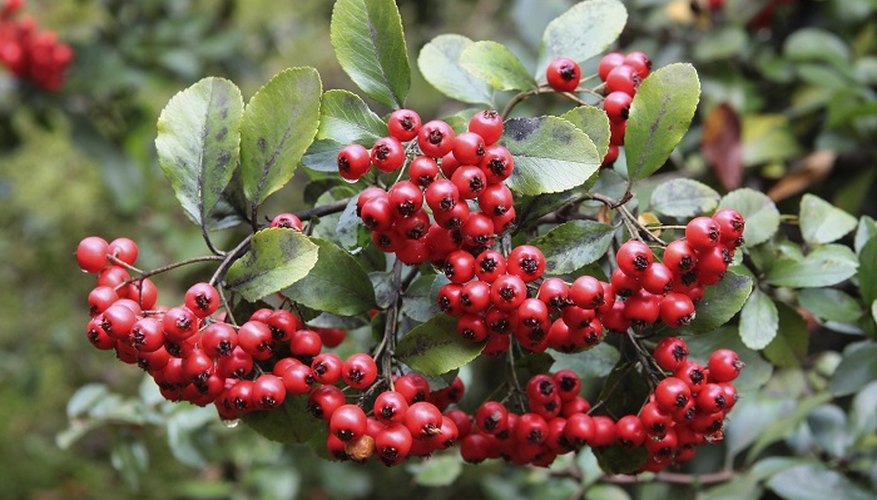A hawthorn hedge is a sight to behold when it is in full flower. The plant grows either as a shrub or small tree but can easily be trained and kept pruned into any shape. The flowers are borne on slim grey stems that terminate in red buds. They often have 2.5 cm (1 inch) long thorns which is why the plant makes an excellent hedge or barrier specimen. Each cluster of flowers is comprised of many smaller blooms, each with five petals. After flowering small red fruits develop that are attractive to birds. Creating a hawthorn hedge must start at planting and training continues annually.
- A hawthorn hedge is a sight to behold when it is in full flower.
- Each cluster of flowers is comprised of many smaller blooms, each with five petals.
Cut the Hawthorn "whips" or seedlings down by half at planting which will be between November and March. This severe step is necessary to force the plants to produce lateral shoots and become bushier. Without this drastic step but if you cut them 6.5 mm (1/4 inch) above a bud node or swelling, the plant can put out up to five new branches.
- Cut the Hawthorn "whips" or seedlings down by half at planting which will be between November and March.
Allow the hedge to grow for one year and that winter prune again. Remove all the new growth back 50 per cent. Do this in winter because each dormant bud will produce numerous shoots in spring. By the second year each whip could have nine to 15 new branches on the sides.
Shape the hedge in the third year. This will be an annual process to minimise excess growth and emphasise form. Hedges should be slightly larger at the base for stability and follow a naturally rounded shape on top or a formal straight edge.
Cut each stem individually to minimise leaf damage and cut them back to just before a bud node. Hedge trimmers will make ragged cuts and shred the foliage which takes time to regrow and ruins the appearance of the hedge. Angle the cut just slightly so water will drip away from the bud instead of on it, preventing rot. Trim the plant in autumn or winter.
- Shape the hedge in the third year.
- Hedge trimmers will make ragged cuts and shred the foliage which takes time to regrow and ruins the appearance of the hedge.
Remove broken, damaged and diseased wood every time you prune and at any time it occurs. Neglected hawthorn hedges can only have one-third of the wood removed at one time so rejuvenation may take several seasons. Take out any branches that cross or are touching. Very old thick wood may require a saw or loppers to remove.
